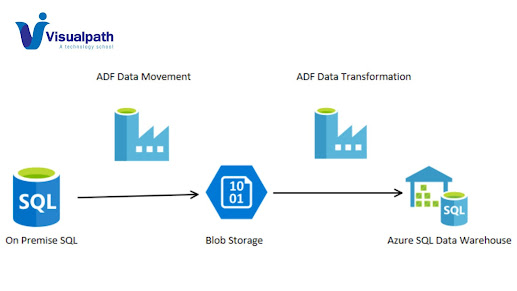File Incremental Loads in ADF - Databricks & Powerbi
In Azure Data Factory (ADF), performing incremental loads is a common requirement when dealing with large datasets to minimize the amount of data transferred and improve overall performance. Incremental loads involve loading only the new or changed data since the last successful load. - Azure Databricks Training
Here are the general steps to implement file incremental
loads in Azure Data Factory:
1. Identify the
Incremental Key: Determine a column or set of columns in your data that
can be used as a unique identifier to identify new or changed records. This is
often referred to as the incremental key.
2. Maintain a Last
Extracted Value: Store the last successfully extracted value for the
incremental key. This can be stored in a database table, Azure Storage, or any
other suitable location. A common practice is to use a watermark column to
track the last extraction timestamp. - Data
Engineering Training Hyderabad
3. Source Data
Query: In your source dataset definition in ADF, modify the query to
filter data based on the incremental key and the last extracted value.
For example, if you're using a SQL database, the query
might look like:
```sql
SELECT *
FROM YourTable
WHERE IncrementalKey > @LastExtractedValue
```
4. Use Parameters: Define
parameters in your ADF pipeline to hold values like the last extracted value.
You can pass these parameters to your data flow or source query.
5. Data Flow or Copy
Activity: Use a data flow or copy activity to move the filtered data
from the source to the destination. Ensure that the destination data store
supports efficient loading for incremental data.
6. Update Last
Extracted Value: After a successful data transfer, update the last extracted
value in your storage (e.g., a control table or Azure Storage).
7. Logging and
Monitoring: Implement logging and monitoring within your pipeline to
track the progress of incremental loads and identify any issues that may arise.
- Azure
Data Engineering Training in Ameerpet
Here's a simple example using a parameterized query in a
source dataset:
```json
{
"name": "YourSourceDataset",
"properties": {
"type":
"AzureSqlTable",
"linkedServiceName": {
"referenceName":
"YourAzureSqlLinkedService",
"type":
"LinkedServiceReference"
},
"typeProperties": {
"tableName":
"YourTable",
"sqlReaderQuery": {
"value": "SELECT
* FROM YourTable WHERE IncrementalKey > @LastExtractedValue",
"type":
"Expression"
}
}
}
}
```
Remember that the specific implementation may vary based on your
source and destination data stores. Always refer to the official Azure Data
Factory documentation. - Microsoft
Azure Online Data Engineering Training
Visualpath
is the Leading and Best Institute for learning Azure Data Engineering Training. We provide Azure Databricks Training, you will get the best course at an affordable cost.
Attend Free Demo Call on - +91-9989971070.
Visit Our Blog: https://azuredatabricksonlinetraining.blogspot.com/
Visit: https://www.visualpath.in/azure-data-engineering-with-databricks-and-powerbi-training.html

.jpg)

Comments
Post a Comment